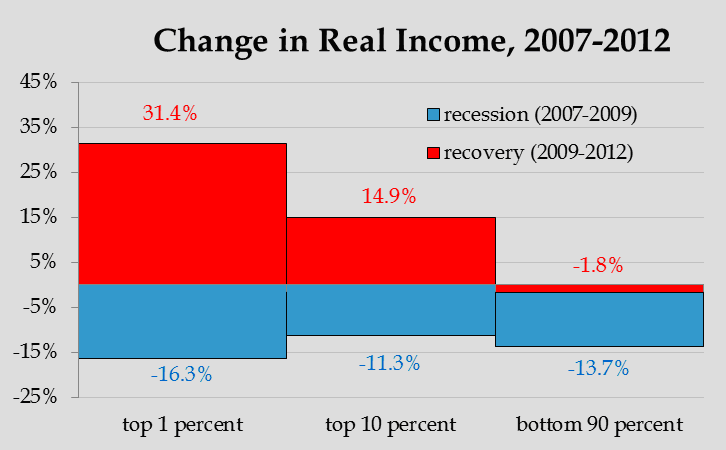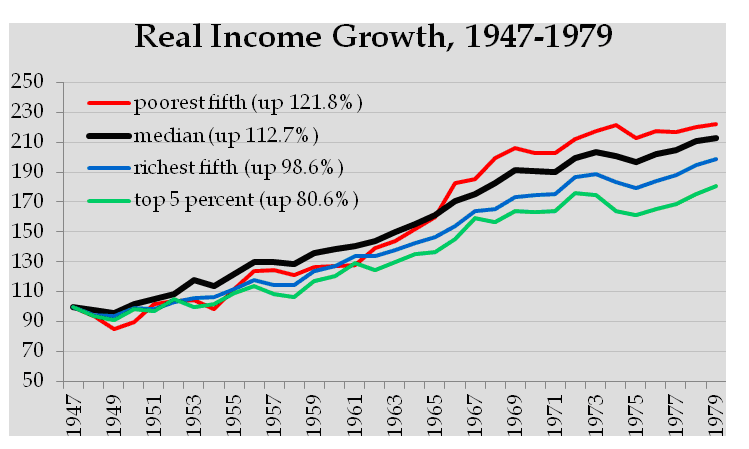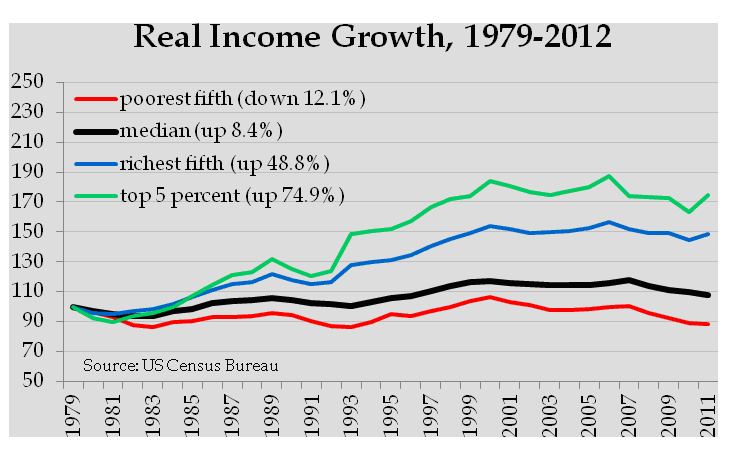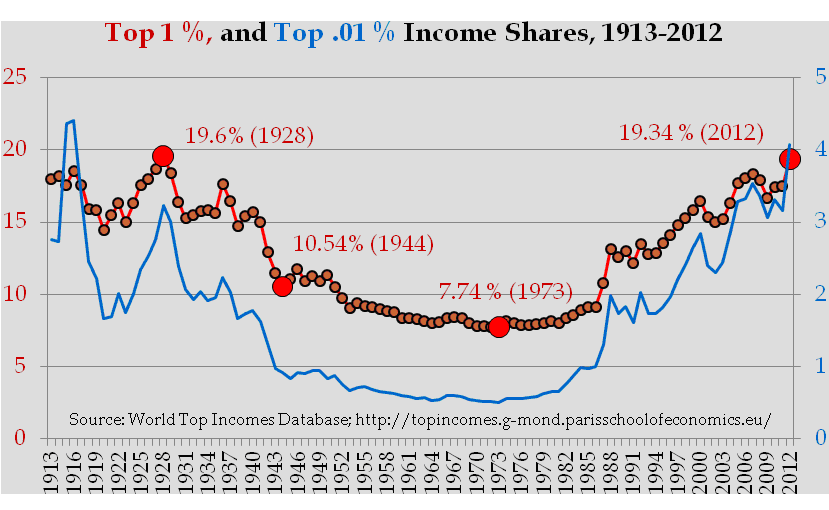Behind the Latest Income Numbers
Behind the Latest Income Numbers
Today the Census Bureau released its 2012 estimates—based on the annual Current Population Survey (CPS)—for income, poverty, and health insurance coverage in the United States. The finer-grained numbers (based on a much larger sample) from the American Community Survey will follow later this month—but it is the CPS, an annual survey that has run since the 1940s, that gives us the best “big picture” view of income trends.
The Census release, which offers long runs of data based on income group, race, age, and family type, comes on the heels of new estimates of top incomes from economists Thomas Piketty and Emmanual Saez. Their work, based on data from tax returns, teases out the trajectory of incomes for the highest earners—the top 10, 5, and 1 percent—over the last century.
Taken together, the new Census and top incomes estimates provide an updated—and unsettling—look at key income trends.
1. Recession for All, Recovery for Some
Let’s start with very recent history—the pattern of income growth across the last business cycle. Here the basic pattern is pretty straightforward: during the downturn, incomes slipped across the board: the top 1 percent lost 16.3 percent in real income from 2007 to 2009, the top 10 percent lost 11.3 percent, and the bottom 90 percent lost 13.7 percent. The equal opportunity recession, however, was succeeded by a startlingly unequal recovery. The top 1 percent saw their incomes grow by nearly a third from 2009 to 2012—hoarding virtually all of the income gains of those years. The top 10 percent regained the ground they had lost during the recession. And the rest of saw our incomes fall another 1.8 percent. Some recovery.
2. Growing Together, Growing Apart
This is nothing new—it merely confirms and exaggerates a much longer trend. In the first thirty-odd years after the Second World War, income growth was broadly shared—indeed the poorest fifth of households saw greater real income growth than any other cohort. In an era marked by steady growth, decent union density, and a much more progressive tax structure, a rising tide really did lift all boats.
In the thirty-odd years since 1979, by contrast, things have taken an ugly turn. The richest 5 percent (up 74.9 percent) and the richest 20 percent (up 48.8 percent) have continued to bob upward with the growth of the economy. But median incomes (up only 8.4 percent) have barely budged, and the poorest fifth—down over 12 percent—are sinking.
3. From Gilded Age to Gilded Age
The larger historical context, in turn is suggested by the full run of top income data. The income share of the richest 1 percent last approached 20 percent at the end of the 1920s—a decade marked by a tax-slashing, laissez-faire retreat from the remnants of the Progressive Era. The decade, of course, ended with the crash of 1929 and a political response that directly challenged the old plutocracy. New Deal–era support for fair labor standards, financial regulation and reform, collective bargaining, and progressive taxation pared the top 1 percent’s share nearly in half by the end of the Second World War.
This share continued to fall across the long postwar boom, bottoming out at under 8 percent in the early 1970s. But since then, that script has played out in reverse—each blow to organized labor, each episode of financial deregulation, each tax cut padding the 1 percent’s share. In 2012, the richest 1 percent again claimed nearly one-fifth of the nation’s income. As remarkably, even the distribution (and rate of growth) within the 1 percent is starkly unequal: the richest .01 percent (a cohort of about 16,000 families whose annual incomes top $10 million apiece) now claim nearly a five percent of national income—a share markedly higher than even 1928.
A rapid rebound from the recession pushed the top 1 percent back to where they were seventy-five years ago, and the top .01 percent to a historically unprecedented share of national income. But that bounce was virtually guaranteed by a generation of policy and political change that invited rent-seeking at the top while undermining security and bargaining power for everyone else.
Check out a narrated video presentation of this information here.
Colin Gordon is a professor of history at the University of Iowa. He writes widely on the history of American public policy and is the author, most recently, of Growing Apart: A Political History of American Inequality, published by the Institute for Policy Studies at www.inequality.org








